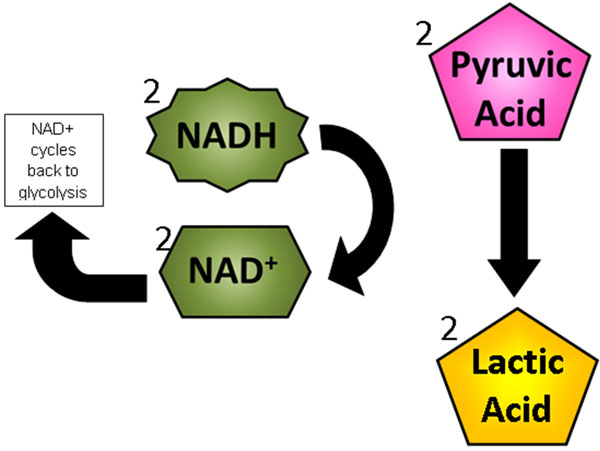
Most organisms carry out fermentation through a chemical reaction that converts pyruvic acid into lactic acid or lactate. Like Alcoholic fermentation, lactic acid fermentation changes NADH into NAD+ so that glycolysis can continue. However during lactic acid fermentation carbon dioxide is not given off.
The diagram below shows a visual summary of lactic acid fermentation.

Many bacteria produce lactic acid as a waste product during fermentation. For example, bacteria are used in the production of products such as cheese, yogurt, buttermilk, sour cream and pickles.
 Source: Left: Yogurt, Good House Keeping; Middle: Sour Cream, Women's Health Magazine; Right: American Cheese, Free Extras.com
Source: Left: Yogurt, Good House Keeping; Middle: Sour Cream, Women's Health Magazine; Right: American Cheese, Free Extras.com
Humans undergo lactic acid fermentation when our body's need lots of energy in a hurry. When running a race for example your cells will have enough ATP stored in them for a few seconds of the run. Then the stored ATP will be gone. Your muscles then start producing most of the ATP through lactic acid fermentation. This process can usually supply enough ATP to last about 90 seconds.
 Source: 400 Meter Run, The Washington Post
Source: 400 Meter Run, The Washington Post
When the race is over the only way to get rid of the lactic acid is to have extra oxygen present. This is why we breathe heavily after a sprint race.
For exercises longer than 90 seconds, cellular respiration is the only way to continue generating a supply of ATP.